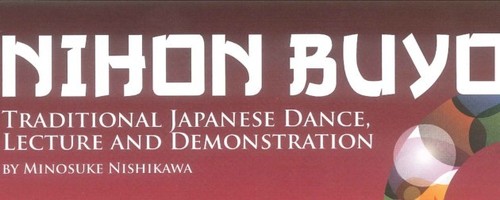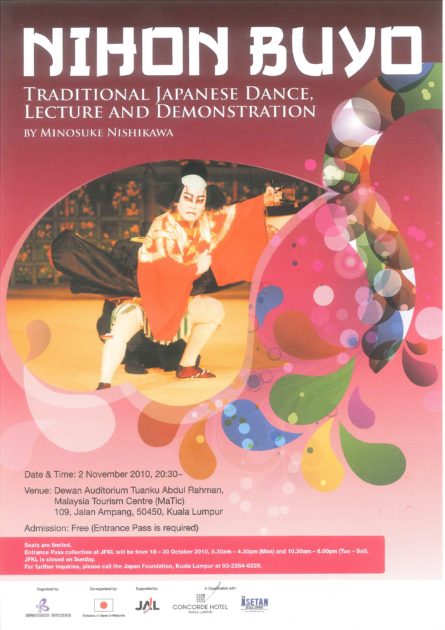The Japan Foundation, Kuala Lumpur (JFKL) will present ?NIHON BUYO?Traditional Japanese Dance, Lecture and Demonstration by Minosuke Nishikawa? in Kuala Lumpur.
Nihon Buyo has developed from a long tradition of dance. Tracing back to the origins of Japan, the oldest surviving text chronicling Japan?s history describes a goddess dancing, with basic elements of today?s Nihon Buyo. Dance, which was closely tied to daily life, often in religious contexts, began to be performed on a larger scale and on stage in the 17th century, especially with the development of the kabuki theatre. As more dance pieces were created and performed as part of the kabuki theatre, dance began to develop into an independent art form. Schools of dance were created, each developing their own style.
With the aim of establishing one distinct form of traditional Japanese dance expression, the term Nihon Buyo (literally ?Japanese dance?) was created in the early 20th century. Today, Nihon Buyo has five large schools, one of which is the Nishikawa, with its history of three centuries, as well as many new schools.
In this performance, Minosuke Nishikawa will introduce the essence of Nihon Buyo through his own lecture and demonstration, while Minosuke Nishikawa and Seira Hanayagi will show the authentic performances.
Date & Time: 2 (Tue) November 2010, 20:30~22:15
Venue: Dewan Auditorium Tuanku Abdul Rahman, Malaysia Tourism Centre (MaTic), 109, Jalan Ampang, 50450, Kuala Lumpur
Location Map: http://www.matic.gov.my/sites/default/files/matic_map.jpg
Admission: Free (Entrance Pass is required)
Seats are limited. Entrance Pass collection at JFKL will be from 18 ? 30 October 2010, 8.30am ? 4.30pm (Mon) and 10.30am ? 6.00pm (Tue ? Sat). JFKL is closed on Sunday. For further inquiries, please call the Japan Foundation, Kuala Lumpur at 03-2284-6228.




